Audio GD R8 DAC, Master 1 preamp, Master 3 power amp, and Magna Hifi ACSS cables
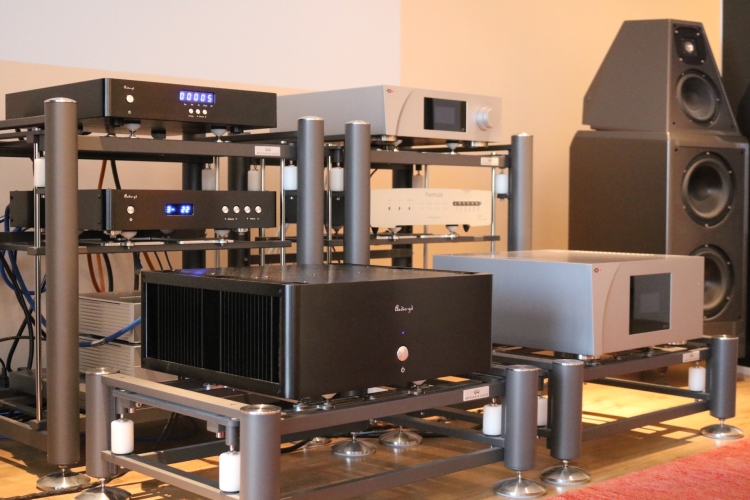
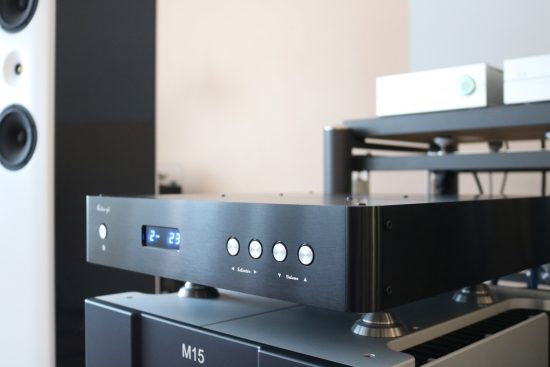
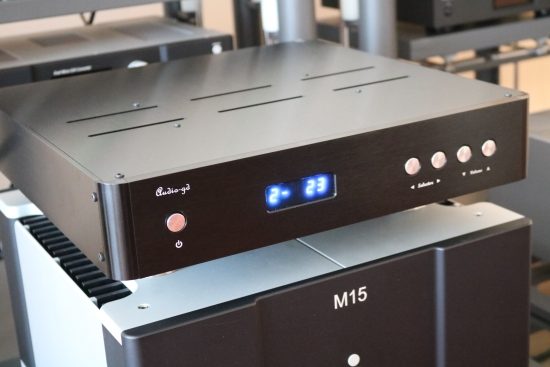
Audio GD Master 1 Preamp
The Master 1 preamp has a sleek profile but is just as deep as it is wide (43cm). It’s not without reason: the Master 1 is actually filled with electronics all the way from the front to the back. Personally, I like these dimensions but you may want to make sure that your rack has enough space. Functionally, this is a straightforward component with two buttons for input selection and two for volume level and a power switch completes the controls. Although I really like its simple looks, the real beauty is within.
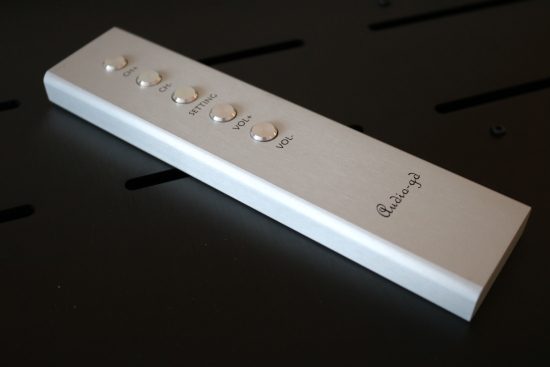
Since the preamp is fully balanced, it contains two amplifier stages per channel that work together, one in normal phase and the other in reverse phase. When setting the volume, this means that 4 channels need to be adjusted simultaneously. Audio GD raises a very fair point in stating that Quality of volume control is very important in balanced applications. The four channels have to work synchronously to keep the balanced signal in perfect shape. Many manufacturers apply off the shelf integrated chips to take care of this and although that works very precisely, it is argued that these components leave a sonic imprint on the sound. Stepped attenuators using discrete resistors, for example, are found to be purer and more direct, although some others claim that those resistors also have a certain sonic character. That subjective matter aside, arguably the purest and most direct approach to volume controls, while retaining full convenience, is what Audio GD have implemented here: high-precision 0.05% tolerance film resistors that are switched by gold-contact-relays.
I first encountered such a volume control in the Jeff Rowland Consonance and Sphinx project 8 preamps and it seems that this method is hardly used anymore but I am glad to see its return here. The Master 1’s volume control has 99 1-dB steps which works just like a chip-based volume control and comes along with reassuring clicks for every change in volume. There are 2 XLR inputs, 2 cinch inputs, and 1 ACSS balanced input. Outputs are provided as cinch, XLR, and balanced ACSS.
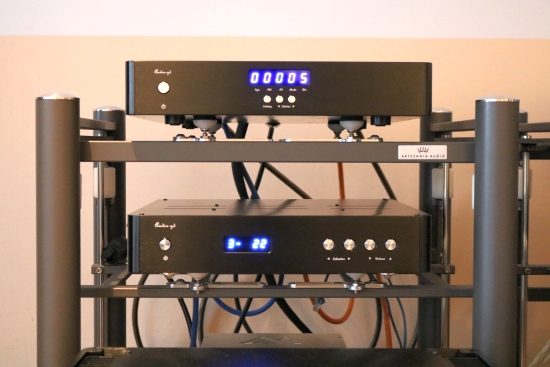
Main system with CH Precision
To really put the Master 1 preamp to the test, I inserted it between the 40K CH Precision C1 DAC and 33K A1.5 power amplifier. ACSS was not possible in this isolated setup so I used a variety of interlinks, including the Cardas Clear, Vermouth Reference, and Final Touch Audio Ganymede. Naturally, that means comparing a system without a preamp to one that includes one which is far from fair but nevertheless, it’s a good way to test the preamp’s transparency. Now, I should state upfront that not one preamp that I tested so far has proven to be truly and utterly transparent. In all cases, you can hear it clearly when a preamp is in the signal path. Not even the 30K Jeff Rowland Corus + PSU was inaudible. In analog preamps, therefore, I tend to look for subjective transparency and overall even-handed performance as well as its performance relative to other preamps, which I will get to further below. In an absolute sense, what I heard after inserting the Master 1 between C1 and A1.5 was impressively even-handed, unfiltered, and neutral, but it did not pass the signal fully untouched. However, whereas some preamps, even very expensive ones, round off the transients, thicken the bass, color the sound, or even add a synthetic touch, the Master 1 did none of those things.
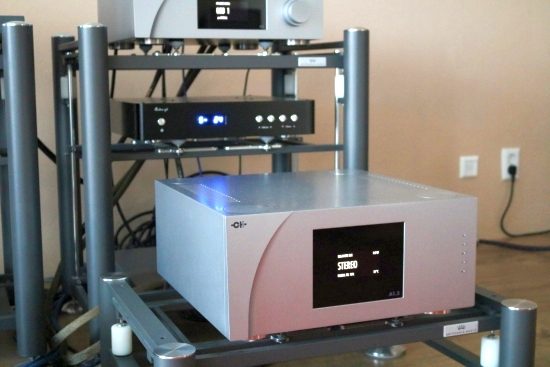
The only sin that it committed was a reduction in the overall resolution, audible mostly in the hi-hats, which lost some of the expression and differentiation of the individual strokes that these sounds are made up of, sounding more washed over, rougher, more like global whooshes, compared to listening without a preamp. But even if it reduced the transparency in an absolute sense, still, it sounded essentially very neutral. And, importantly, in spite of its neutrality, the Master 1 never sounded clinical, let alone hard or harsh, the overall sound was actually very natural.
The Master 1 preamp was very revealing of the cables used to connect it. Although it certainly sounded most impressive when connected via ACSS, depending on the required balance it worked well with all the aforementioned XLR and cinch cables and arguably provided the most refined sound using the Cardas Clear of Final Touch Audio Ganymede.
At this stage, if I did not know better, I’d say that this preamp had a 4000-5000 price tag.
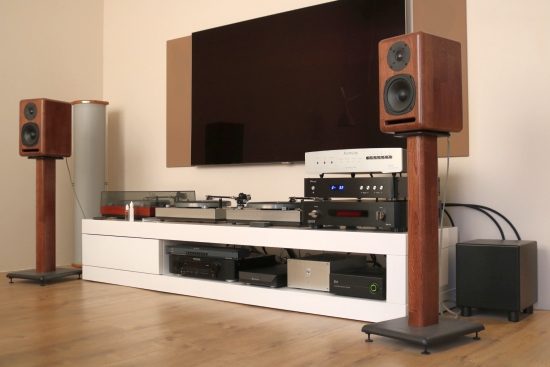
Secondary system with Ayon
Then, for a much fairer comparison, I took the Master 1 to the second setup, in which it was compared to the 7K Ayon Stealth preamp. The speakers in this setup are Xavian Perla Esclusiva and the power amp is the NuPrime ST-10. As a DAC I used the super hi-res Aqua Formula xHD and the interlinks between all the components were all AudioQuest Water cinch versions. Compared to the Stealth, the Master 1 is lighter in balance but actually very similar in resolution and refinement. Here, I did not notice a difference in treble differentiation at all, further confirming the relativity of the aforementioned tests using the main CH system.
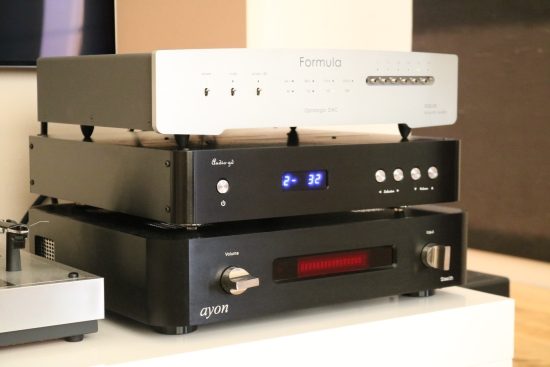
The Ayon is a tube design, one that sounds very bold and colorful and with a tonally rich midrange and I love it for that. It works a treat in this setup and pretty much anywhere else that I tried it. But I wouldn’t call it very neutral. The Master 1 is considerably more transparent and a lot cleaner and therefore truer to the source. Just like in the main system, the Master 1 has an even-handed and highly neutral sound that injected no discernible character, subjectively in this setup sounding pretty much as if no preamp was present at all.
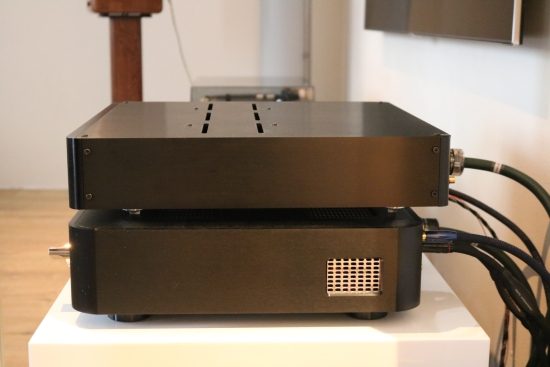
As inescapably tends to happen with very neutral transistor-based components, the Master 1 did not possess the euphonic midrange magic and free-flowing soundstage abilities of the tube-based Stealth but, importantly, neither did it make the music mechanical and certainly not analytical, the presentation remained natural. Moreover, after having listened to the Master 1 for some time and going back to the Ayon, the latter sounded quite bassy and uneven, further highlighting the neutrality of the Master 1. After some time, though, you got used to its specific tonal deviations again and its tube magic wins me over.
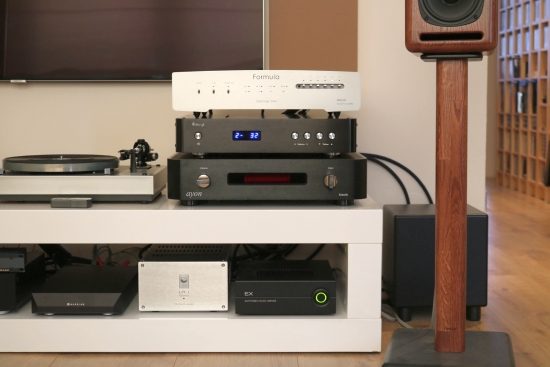
Although the Ayon’s character fits this system very well and I happen to like its bold and colorful presentation, the Audio GD Master 1 is easily more neutral and definitely more revealing of the source. Oh, did I mention that the Ayon is 7K? Well, the Master 1 is A LOT less than that.
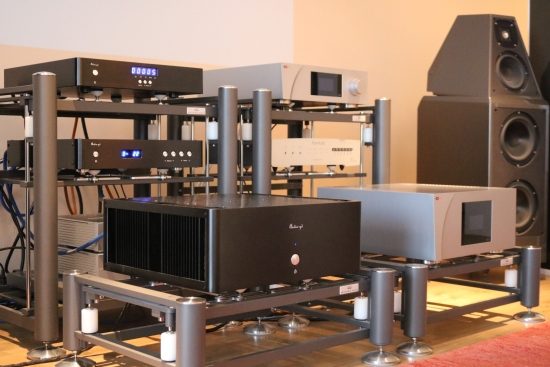
Audio GD Master 3 Power Amp
Of the three components, the Master 3 power amplifier is visually the most impressive. Big and heavy and constructed from thick aluminum panels, it reminds of classic high-end power amps. It’s not only taller than the slim source components but at 48 cm it is also wider. It weighs 40KG but thanks to the clever crossbars that are positioned along the cooling fins, it is a lot easier to carry and position than amps with similar weight and no handles.
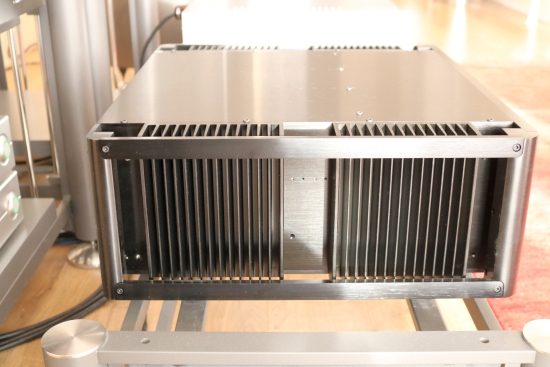
Like the other two components, this is a true balanced design, meaning that there are 4 amplifiers built into the chassis. Although all power amplifiers employ preamp gain stages that work in voltage mode and power output stages that work in current mode, it seems that the Audio GD Master 3 takes this one step further. Like the DAC and Preamp, the power amp offers ACSS connections but apparently applies the underlying circuit to the entire amp. The below official info, slightly paraphrased, may well be an explanation for why I found the differences between XLR cables and ACSS cables to be less spectacular than with the DAC and Preamp.
“The Master 3 power amp has a single “voltage” gain stage to process signals but works fully in ACSS mode which is a current gain stage instead of the standard voltage gain stage. The voltage gain state applied by almost all manufacturers requires at least two or three voltage gain stages … which improves the XLR connections to be able to sound as good as the ACSS connections. It seems complex, but in fact, it is a most straightforward design … We implemented the most elementary and shortest signal path resulting in the most neutral and cleanest sound.”
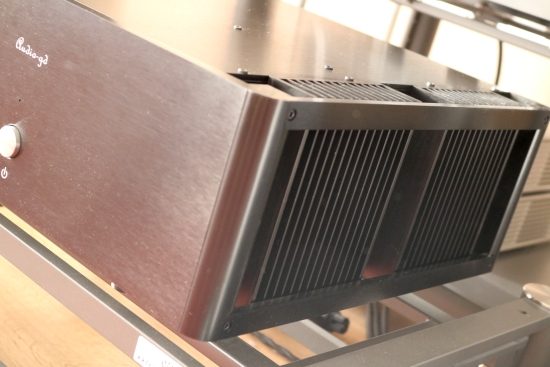
With manufacturer-supplied figures of 250W in 8 ohms and 500W in 4 ohms, the Master 3 does the power doubling trick which is often seen as the holy grail in amplification. In practice, not many amps can claim to be able to do this. The doubling of power means that the power supply is very stable which allows the amp to control “difficult” speakers more easily while retaining unfettered output even in uneven impedance characteristics. With a total of four transformers (2 Toroidal for the current stage, 2 R-Core for the voltage stage) amounting to over 1500 watts, followed by 140,000 uF of capacitance, fed into four independent outputs with a total of 24 ON Semiconductor transistors, there is no doubt that this is a very potent amplifier. The manufacturer claims that this amp’s vigorous current output drives most complex loudspeakers and again I have no doubt about that. All the gain stages work in Class A and the power output stages work with “high idle current”, indicative of a high bias, Class A/B design. In use, and with the speakers that I had at hand, the amp only ever becomes hand-warm, never hot. The output stages have zero negative feedback and are DC-coupled, built using all discrete components, so without any Op-Amps. The output stages use a proprietary technology developed by Audio-GD which is referred to as “Linear Fidelity” (patent pending). It is not disclosed how this circuit operates precisely but the aim is to avoid distortion that normally goes hand in hand with zero feedback designs.
Very powerful amplifiers can sometimes be the aural equivalent of a heavy luxury car with an oversized engine, meaning that they can have plenty of torque but not so much the agile behavior of a sports car. In other cases, very powerful amplifiers can sound overly controlled, especially when driving efficient speakers. Fortunately, neither of these scenarios apply to the Master 3. This amp is absolutely not slow and neither is it over-controlled, it really is superbly balanced. Although I understand that it is not possible to truly remove all forms of feedback from an amplifier design, I’ve listened to more than a couple of low-feedback designs and designs that only use local feedback. In general, what these bring is a naturally free-flowing sound. Alas, in most cases, however, I also find that the tightness of the bass and to some extent the rhythmic performance are sacrificed in the process. This again is something that absolutely does not happen with the Master 3. This amp has tight, articulate, and very fast bass.
Sound
Do note that cold from the box and prior to the running in, the Master 3 not only sounded thin, but it also lacked bass pressure and was devoid of tonal color. One week of playing time did a lot for the bass grip and the tonality also further filled out after that.
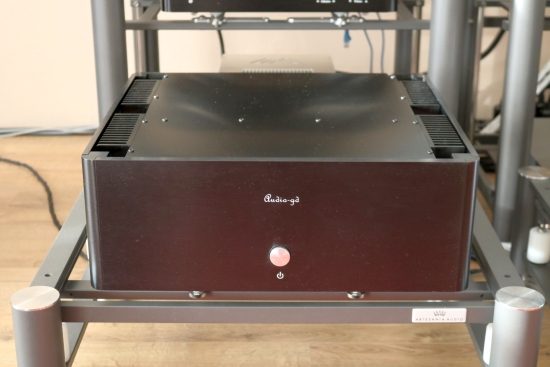
So, how does the Master 3 power amp sound when it is on song? Well, it doesn’t really have a sound at all! As mentioned, it is fast and articulate yet not analytical. It is also extremely neutral and very linear. The amp simply does not add any character to the sound. The main aspect that stands out for me of the Master 3’s delivery is its bass, which is on the lean side. In spite of its huge power reserves, this is not a thunderous-sounding amp. But that’s probably for the better because very beefy sounding amps don’t usually excel in pace and rhythmic precision and that is precisely where the Master 3 does excel. If I did not know any better then I’d assume that it had a switched power supply, it really is that nimble and fast. If there was anything that I could criticize about this amp’s delivery on its own, in the context of my usual system, it would be that it can be a little bit restrained dimensionally, as well as in terms of expression. Then again, amps that do all that the Master 3 does and add these last requests simply don’t come in a price category that is anywhere near comparable.
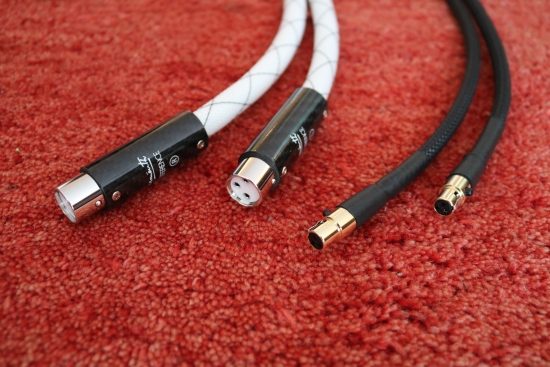
Vermouth Reference and Audio GD ACSS cables
Although the differences between XLR cables and ACSS cables were indeed less pronounced than they were with the DAC and Preamp, I still found the amp to sound best using ACSS. A good second place, in this case, was for the Vermouth Reference XLR cables which added more heft and impact to the amp’s sound.
Comparisons
Given the ginormous price difference, my next comparison is ultra-unfair. But, as always, I figured “why not?” and proceeded anyway. The 33K CH Precision A1.5 does not have a very voluptuous sound itself, it is, first and foremost, a very, very, neutral amp. Hey, the Swiss practically invented neutrality! The interesting thing is that the Master 3 has a similarly neutral and even-handed balance although it is a little bit leaner still in the bass. The Master 3’s treble performance is also quite remarkable. It does not stand out in any way, being as articulate, airy and precise as it needs to be, neither hard nor washed over, not sticking out nor rolled off. Truly, not many power amps, especially not the ones as powerful as the Master 3, deliver this kind of treble performance. Apart from the bass, the most outstanding difference between these two amps is in terms of resolution and finesse, the A1.5 being considerably more resolving and subtle. And that’s fair enough, given that it is over 10 times more expensive than the Master 3.
Another amp that is on visit for a review is the Naiu Laboratory Ella. A switching amp using bespoke technology, one might assume it to sound like something based on ICE power- or perhaps Pascal modules. The contrary happens in this case, the Ella sounding warm and smooth with sonorous, super-solid bass, all in all more like class A than class D, in fact. At 8K, the Ella amp is not cheap but also not outrageously expensive. Where does this place the Master 3, you might ask? With the Ella’s smoothness and the Master 3’s neutrality, the two amps have very different presentations. When I focus on the refinement and resolution, I’d rank them as being equally great. For good measure, neither is able to approach the extremely refined CH Precision A1.5, but both are still easily hi-res enough to be quite revealing of the source components. In addition, although the Ella sounds sweeter and has very natural treble behavior especially for a switching amp, the Master 3 is actually texturally more fleshed out, especially in the midrange. It’s a kind of inner resolution and harmonics that is something that I often find is better with class A/B designs than with class D designs.
While the Master 3 worked well with all the cables that I tried, of the regular XLR cables, the Vermouth Reference provided the most powerful and sonorous balance that I found most attractive. The Magna Hifi ACSS cables provided a less sonorous and solid but more natural, refined and free-flowing sound, however, that only works with the other equipment that has ACSS (-compatible) connections such as Audio GD equipment. But I’ll dive deeper into this in part 3 in the section ACSS Sound.
While in the field of switching amps, let’s include the NuPrime ST-10. I’ll not beat around the bush: the little NuPrime has bigger bass and sounds more sonorous, bolder and more “live”-like. Note that I am not saying that it is more lifelike but its delivery does come across more like that of a band playing live. It is vigorous and plays with real gusto and I really like it for that. But the ST-10 also has its weaknesses, most notably its resolution and treble performance. While the Master 3 does not have the ST-10’s drive and slam, especially in the bass, it does outperform the latter in terms of neutrality, even-handedness, overall refinement and treble performance in particular. The Master 3 also has a lot more power but with my speakers, it can’t really play out that trick. Nevertheless, even with relatively efficient speakers such as the Wilson WATT/Puppy 8 and the Kroma Audio Carmen, it is impossible to not have huge respect for what the Master 3 achieves, especially if I reveal its price in a bit.
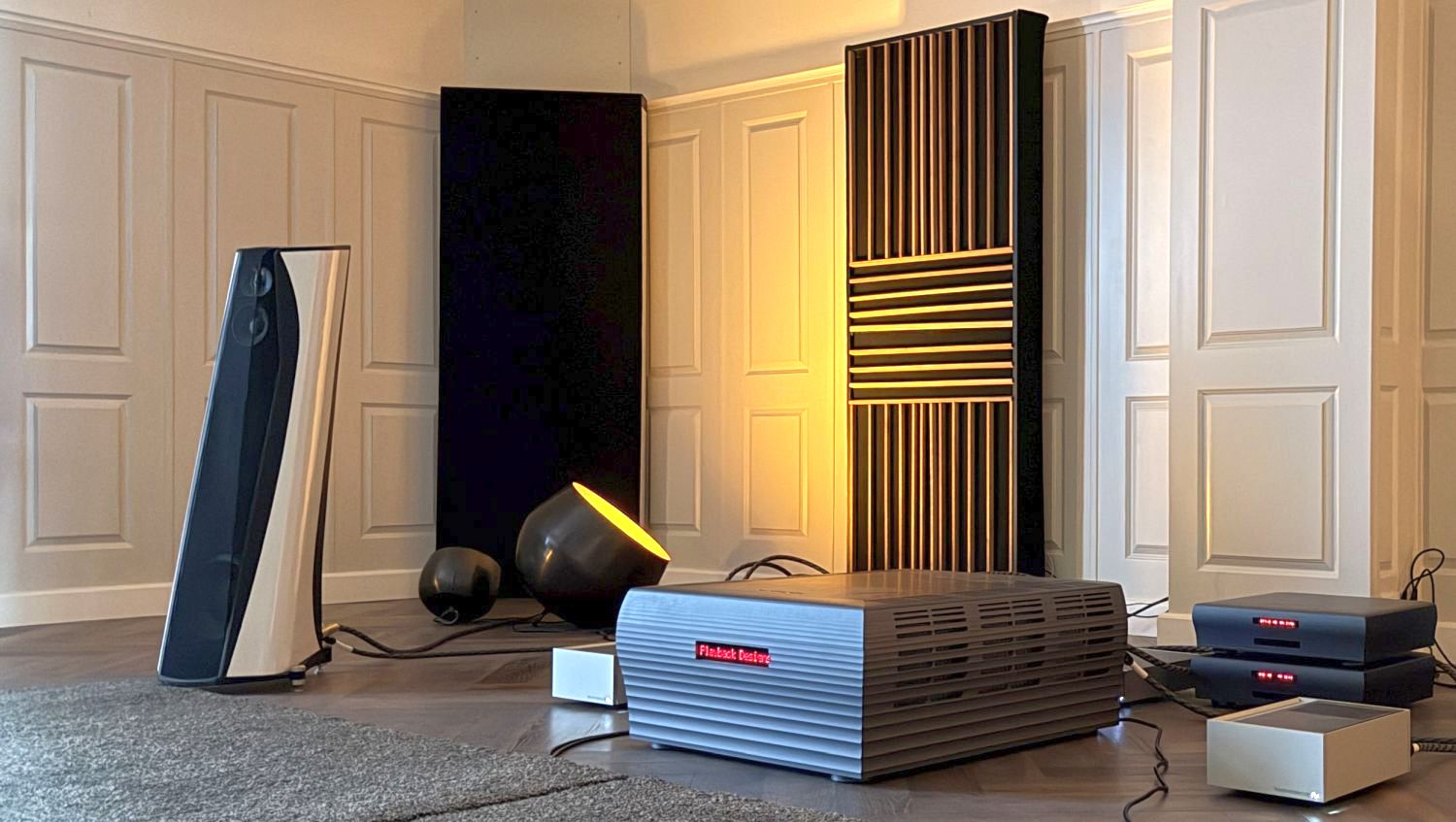

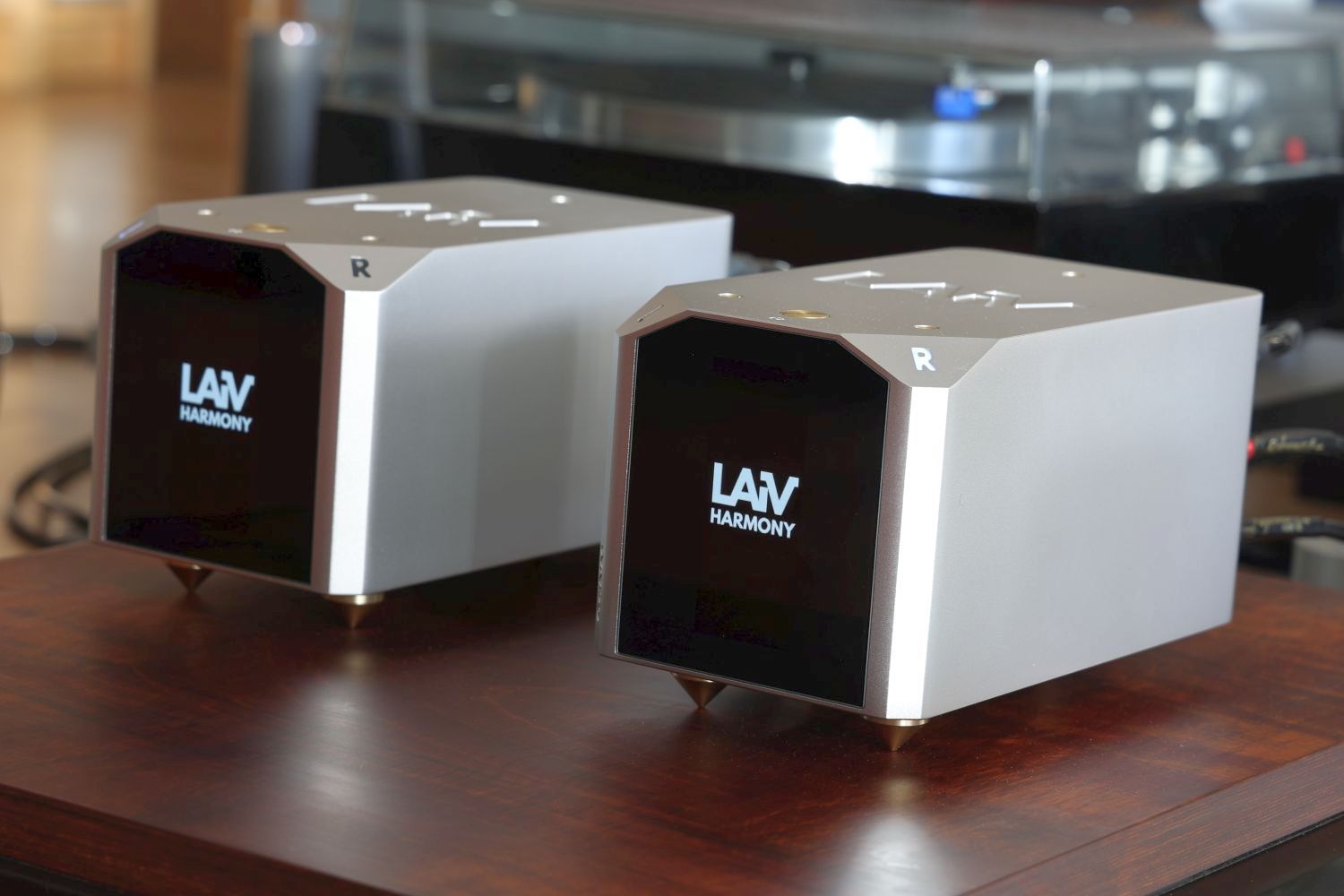
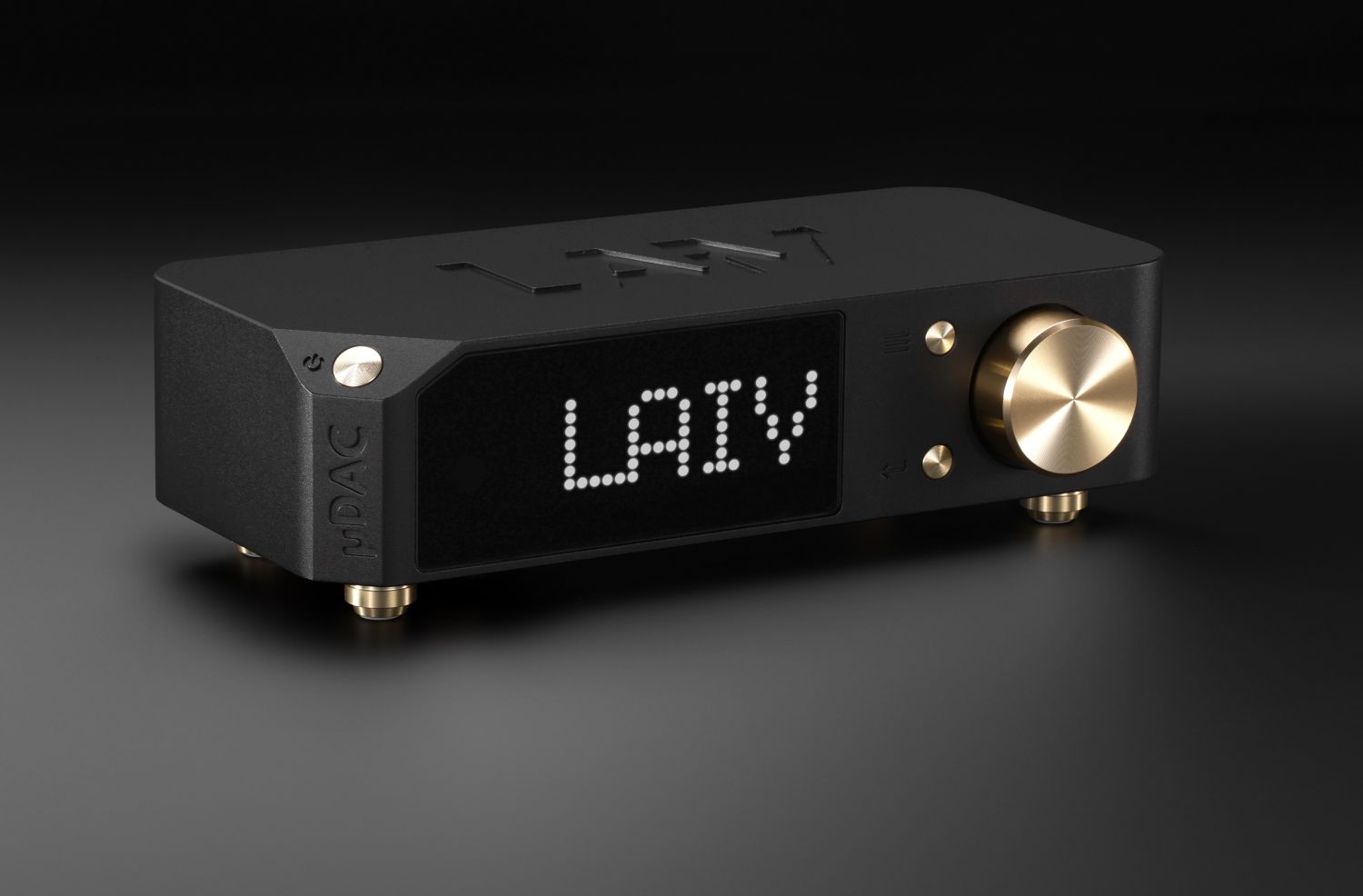
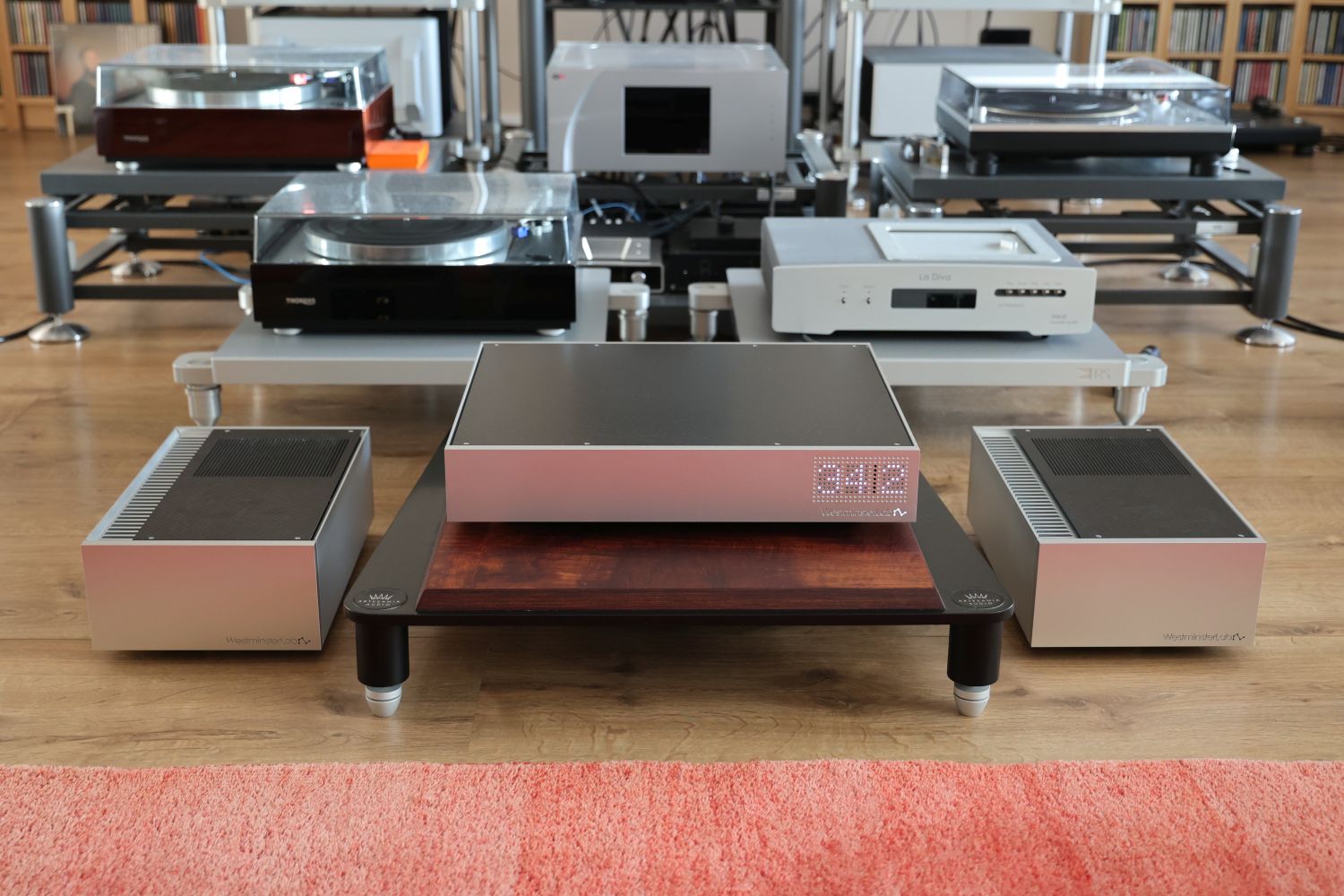

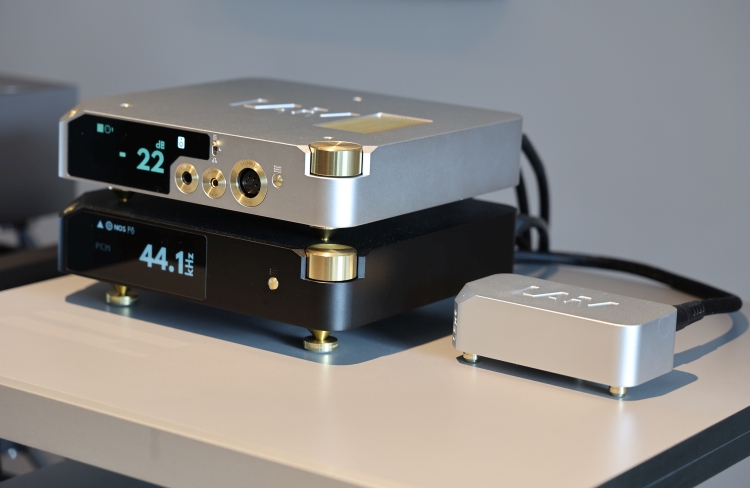

Hi Christiaan,
In the running in paragraph you mention using all components together, so I wonder how you manage to establish that it is the power amp that needs the most time settling in, rather than the preamp or DAC. How can you tell?
Kind regards, Johan
Fair question Johan! Well, it’s simple, really. I just shuffled the timelines in the story-telling. In reality, I first listened to the DAC, then the preamp, and then the power amp. When I found the latter to sound thin at first, I left it switched on while tending to other things to review and revisited the amp later and only the complete system all the way at the end.
Thanks for clearing that up, now it makes more sense.
Your review pretty much sums up the way my Audio-Gd Master 10 sounds though I think you were a bit to polite in your review as really it just sounds boring and not in an accurate way . Audio-Gd’s Kingwa is polite to sell a product but when it comes to supporting their customers for a warranty his politeness ends as I still have a Master 10 with a right noisy channel and absolutely no help from Audio-Gd in resolving this pretty much the attitude of most Chinese sellers towards foreigners . If you do not mind reviewing Chinese amplifiers you should take a look at a Chinese amplifier inspired by DartZeel called the NHB-268/368 on TaoBao SR Audio or AliExpress Queenway a real bargain though again no support for its customers .
Hi Stoka, having a noisy channel is not good of course and this should be fixed. I am sorry to hear that the Audio-GD customer support is not any help in this. That is why it is advisable to buy from an official distributor rather than factory-direct. Anyway, regarding the Master 10 sound, I agree that it is not very entertaining or special on its own. It is very neutral and quite transparent but indeed not as accurate or refined as my much more expensive alternatives. When connected using the very full and organic sounding M-Way ACSS cables throughout, however, I found the combo to sound very good, especially given the relatively low price tag. I think I outlined all of these aspects in the review. For me, the preamp and especially the DAC are the stars in this lineup.
It is a fair point but I purchased before they were available in stores . Though you would think the actual owner Kingwa would be of a more decent attitude towards his customers . I would love to try the ACSS though it is tailored predominantly only for Audio-Gd DAC’s which limits its use unless you have Krell’s old school current driven equipment . When matched with a decent powered tube pre-amplifier the NFB-268 I have bought absolutely puts the Master 10 amplifier to shame where I have delegated the Master 10 to my home theater rears channels .
What do you think about timbre charateristics of the Master-10? Have you ever listened Nuprime amps?
Audio-Gd is not innovative it does as all Chinese manufacturers do they copy well implemented Western designs such as Audio-Gd’s ACSS is just copied from Krell and its buffered output is from Sansui and its Ladder DAC’s were a copied response to the discrete DAC fad the Western DIY community started . Though the difference Audio-Gd has over most Chinese copy manufacturers it is well implemented and sounds half decent for the money and is of course built like a battleship .
Wow……
thanks for the great review…..as usual
and you have not heard the big-brother R7…..
and yes…..it is right…the front panel as its own logic……but once you get it, it is clear.
I am waiting for Master 3 and Master 1 to arrive at my house soon, and I am already a very happy owner of an R8 dac.
After testing a Metrum Ladder dac recently at an international Audio Show in Australia where we presented our speakers, I decided to have a ladder dac in my system.
The Metrum is a great dac, but I think the R8 is even better. But to be fair, it is difficult to confirm it without making a side by side comparison with the same audio system.
All I can say is that in our system and for the first time I have listened to the most analog sound of any digital component to date.
Talking to Kingwa he mention that his Master 2H monoblocks is the option if you are looking for a more bassy amplifier but with the same refinement and natural sound as the Master3
Did you get your Master 1 and Master 3? How does the match sound with your R8?
I am of course not in any manner involved or part to Audio-GD business.
I am just an audio enthusiast!
i purchased the R7 DAC, and 20 days later the pre Master 1 from Magnahifi
both products are fantastic!
connected via ACSS
they easily outperform everythink i have listened in the past for
tranparency, timbre, soundstage, articulation and precision.
a great and involving musical experience
The bass “presence” in the Orchestral pieces is simply great
not to mention that the R7 (and R8 as well) has 4 different algorithms to match your personal taste, and firmware updates.
I decided for Audio-Gd thanks to the great work of the Reviewer himself. Otherwise the brand itself is quite obscure and unknown.
Christiaan’s transparency, precision impartiality and deep-technical background makes reading hifi-advice reviews a real pleasure.
Thanks Luca, it’s great to receive such feedback and I’m glad to hear that you are so happy with your Audio GD components!
Hello Christiaan,
Thank you for the review, very interesting.
I have the R8 DAC and I think its an outstanding DAC. Nevertheless, I STRONGLY recomend some upgrades (ot too expensive) that I think turn the R8 into a musical beast:
1. If you have an R8 version prior dec-18, buy the V2 DA boards from Audio-GD directly and then change them at home. You will need some tech skills or to have a trusted technician near by as I did.
2. Acusilicons clocks. Another GREAT upgrade that you can buy at Audio-GD and similar to change as the V2 boards.
3. Gustard U16. A UBS to I2S (HDMI) converter. Another GREAT upgrade to feed the R8 with the I2S port and get a MUCH better sound than with the USB Amanero board.
4. W4S UBS Reclocker. A good one to feed the U16 with a cleaner USB signal. Or any other good USB conditioner.
There are several threads about these three first upgrades on Head-Fi forum.
Regards,
Thanks for these suggestions Pedro.
Hi Christian,
I’m the owner of HULGICHAUDIO (www.hulgichaudio.com.au) and I regularly read your reviews as I find them very well presented and professional.
Having some AudioGD gear myself I can’t agree more on your observations about their sound.
As a developer of high-end speakers, I regularly have the opportunity to test very hi-end equipment myself, and AudioGD is amazing great value.
Best regards.
Nicolas Hulgich
HULGICHAUDIO
Hello again Christiaan,
I had the opportunity to try a Benchmark DAC3 in my system last night, in comparison to my 2021 R8, which is paired with a Master 1 & AMG-STAs. I noticed that the Benchmark had a slight, but meaningful edge in the presentation of vocals. More detail and texture was clearly audible to both my friend and I.
I would really value your advice on which parts of my system you would consider developing to move in the direction of this particular outcome? Other than just buying a Benchmark DAC3 🙂
This is my setup (a lot of which will be familiar to you):
A modded Cisco Meraki switch with an SBooster linear psu, connected to a ethernet fibre media converter, on the 5v output of a Keces P3 linear psu
A Mano Ultra streamer via an Audioquest Pearl ethernet cable and Mogami SPDIF cable
A MiniDSP SHD Studio with a Mogami 3080 AES/EBU XLR digital cable on the 12v output of a Keces P3 Linear PSU
An Audio-GD R8 Dac 2021 with two M-Way ACSS NTRL interlinks
An Audio-GD Master 1 Preamp with Foilflex XLR Balanced cables
A pair of Nuprime of AMG STA power amps on IsoAcoustics Orea Graphite pucks
A pair of Wilson Benesch Precision P1.0 with a pair of FoilFlex loudspeaker cables on IsoAcoustics Gaia IIIs
A pair of Townshend Maximum Supertweeters
A pair of REL T/7i subwoofers on IsoAcoustics Gaia IIIs
Thank you as ever & best wishes,
Jason
Would it be possible to approach Magna about getting an Audio GD R7HE Mk2?
Headfi is going mad for this dac, so it might be good to compare it to the Aqua Formula HDx V2 that you have. I, for one, would be very interested to see how it stacks up,
Thanks
Hi James, can’t promise but will keep it in mind.
Hi James, alas, due to the limited availability and increasing delivery times, I am unable to get the Audio-GD or Holo Audio components for this review. At this point, and so long as the situation remains unchanged, the distributor understandably would rather make sales than postpone these due to reviews. The Denafrips components will be available in about a month and I am considering doing a one-brand comparison with three product levels.
Hi Christiaan,
You have reviewed the Bryston 4B3 amplifier in the past.
I know it’s difficult to compare from memory but how does the Master 3 fare against the Bryston you think ? I know the Bryston is much more expensive but the Audio-gd gear seem to push the limits of their price range. I expect the 4B3 to sound much better but by how much ?
best regards
They’re so different that I couldn’t say which one is better per se. The Bryston sounds full and rich in the bass, smooth overall, a little sweet, and a little relaxed, but quite neutral nonetheless. The Audio GD has a tight and articulate bass, with an overall faster, cleaner, leaner sound. In terms of resolution, I’m not entirely sure without an AB comparison. It could be a tie or maybe the Audio GD is slightly more highly resolving. Either way, it’s mostly a case of more forgiving versus more analytical. You may find the Bryston to be more “musical” but I feel that the Audio GD is closer to sounding like a wire with gain. On a related note, my experiences with the M2H monos have made me think that maybe I haven’t given the Master 3 enough time to come on song. Or maybe the M2H’s are just that much better, that’s also entirely possible.
hi Christiaan
Wow, you’re fast. The “ink” on my post hasn’t dried yet and you already came with an answer !
I already own the Master 3 and overall I’m quite satisfied with how it sounds. I was just wondering if spending more would bring a significant improvement. However, reading your comment it seems that the current price of the Bryston (€ 7.500) being almost 3,5x the price of the Master 3 is not really justified. It seems more of a side way step than a real improvement. What would you recommend as a step up from the Master 3, besides the 2H monoblocks (too much “real estate” for my living room) and staying below the five figure price tag of the high end ?
By the way, may I recommend reviewing the Rotel Michi S5 power amp ? This one seems to be a winner and is even relatively affordable.
best regards
It depends on what you consider an improvement as well as on what you expect. The Master3 can be regarded as neutral and highly resolving but perhaps a bit lean and analytical whilst the 4B3 can also be regarded quite neutral but richer and more colorful and with bigger/fatter bass. There are no absolutes. What I can say is that if you like the Bryston sound, it will be very hard to improve upon without spending a fortune. And the same goes for the AGD. Between these two, it’s more a matter of perception than of absolute quality. One person may feel that the Audio-GD is not very musical while another may feel that the Bryston can be a little slow. One major upside for Bryston, of course, is the 20-year warranty.
The next step up from the Master3 is indeed the M2H’s. Anything else that I consider to be significantly better jumps right over the 10K mark (see my amp reviews).
Another brand that also offers amazing value for money is NuPrime, most notably their amplifiers. The AMG STA, for instance, has amazed everyone who heard it, even seasoned audiophiles have to admit it’s much better than they anticipated. It’s not perfect but has a “more or less” similar overall balance as the M2H, as in also linear and transparent, and it improves on the Bryston in some respects, but not all, of course. Also, I wouldn’t say it beats the M2H’s.
I’ve noted the recommendation for the Michi amp. Can’t promise anything, though.
Good evening Christiaan,
I wanted to ask you, kindly, if you have had the opportunity to try, or if you will, also the Audio-gd Master 3A in class A.
Thank you for your attention,
Andrea
Hi Andrea, I’ve not heard it myself but what I am told is that it sounds smoother and fuller but also less articulate than the Master 1.
Thanks for the quick answer, one last clarification … what do you mean by “less articulate”, perhaps less fast?
Thanks for your kind availability
Articulate is the opposite of mumbling or being close-mouthed. I use it when referring to music that sounds very precise and detailed, particularly in the lower frequencies, as opposed to sounding warm, fat, thick, or woolly. See also the HFA Audio Lingo.
“Wow, look at all this time that has passed, I wonder where Audio-GD is in terms of DACs and preamps at this point vs lets say, Denefrips and/or others…”
Any chance of seeing a R-27HE review (DAC/pre), and/or its separate counterpart the R-7HE MK3 DAC and the HE-1 MK3 preamp??!!
Yeah, time really does fly! Regarding the R-27HE, I would be happy to review it if the distributor wants to set this up.
…I just heard there is a huge jump in quality and performance since their pre- 2021-ish models.
@Christiaan, I’ve reached out to a Audio-GD and Magna to see if they can’t get the ball rolling. Let me know if the care about their potential customers!
Hi Marc, I’ve not yet heard back from them. But if and when a review is planned, I will announce it on the home page.